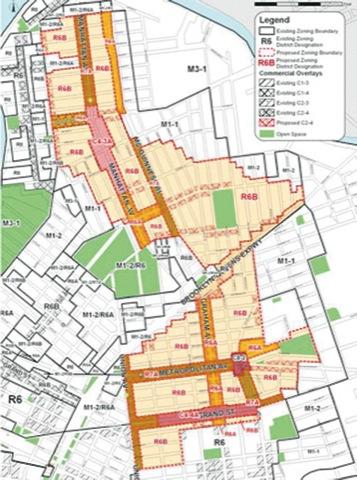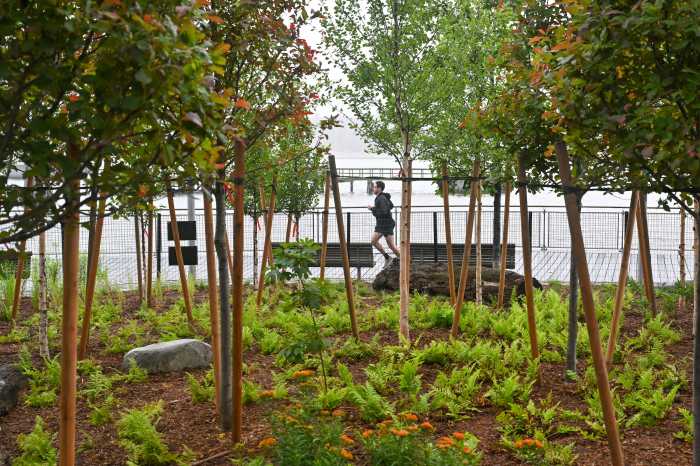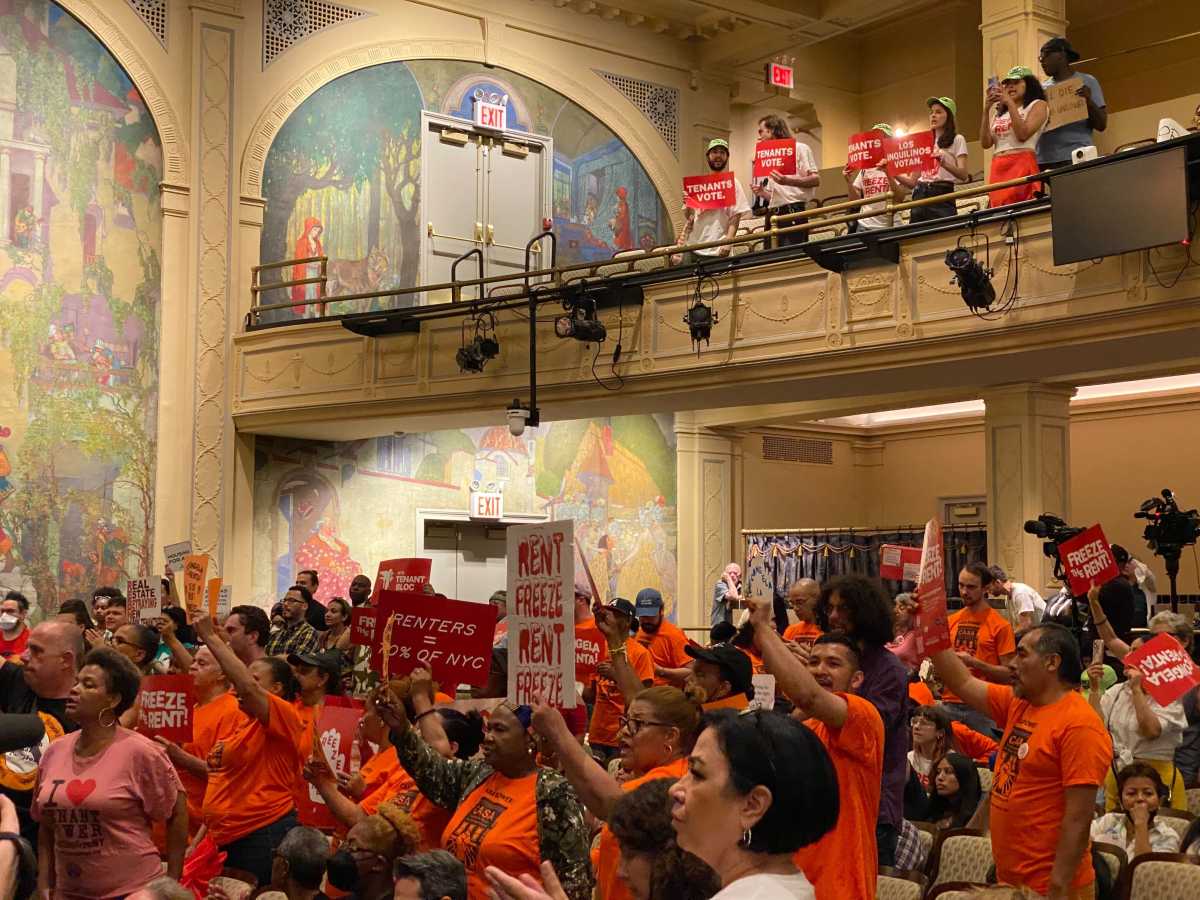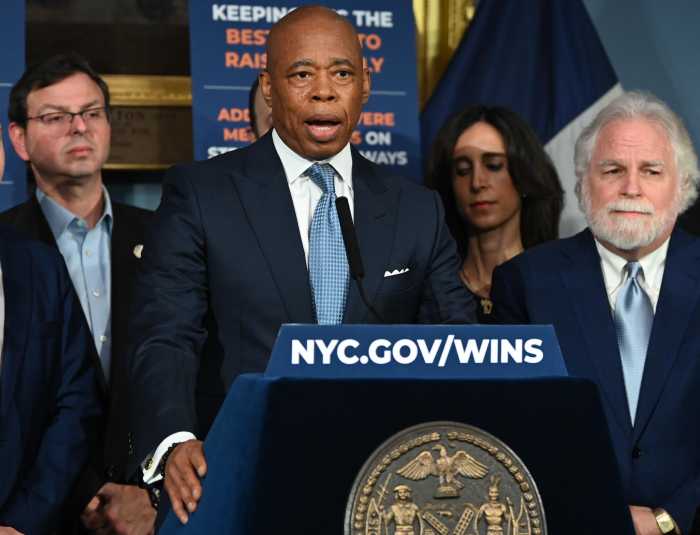The City Planning Commission held a public hearing this past Wednesday regarding the rezoning of the “inland” portion of Williamsburg and Greenpoint not covered in the area’s waterfront rezoning in 2005.
The plan, which was approved resoundingly by Community Board 1 in April, would “contextually” rezone 175 neighborhood blocks to prevent high−rise buildings. Of the 10 speakers who testified before the commission, nine of them supported the project. The lone dissenter said limiting building heights might lower the value of his property.
Having heard testimony from the public, the Commission now has until July 20 to vote on the matter. After that, it would go to the City Council, which would have 50 days to vote before the rezoning is enacted into law.
Ward Dennis, chair of the ULURP Committee of Community Board 1, said, “Everybody’s pushing for City Planning to take it up as quickly as possible,” perhaps at the Commission’s next meeting in mid−June.
The rezoning covers an area bordered by Clay Street to the north, Scholes and Maujer streets to the south, and East Williamsburg’s manufacturing areas to the east. The Department of City Planning agreed to the rezoning after the 2005 rezoning, which limited heights of buildings on some inland streets but enabled luxury high−rises on the formerly industrial waterfront.
The proposal would rezone around 90 percent of the neighborhood from its current R6 designation, which in some cases enables high−rise buildings more than 10 stories tall, to R6−B, which caps building heights at five stories.
Currently, most of the existing buildings in the area are two− to four−story attached row houses or apartment buildings. The rezoning enables bigger buildings – in both height and density – than most of these buildings, and is therefore referred to as a “contextual” rezoning rather than a more restrictive “downzoning.”
In addition to the creation of R6−B zones, the new zoning would give some of the neighborhoods wider streets – such as Graham Avenue and the southern portion of Manhattan Avenue in Greenpoint – an R6−A designation, which allows for six and seven−story buildings.
And certain corridors – namely, McGuiness Boulevard, Metropolitan, Graham and Bushwick avenues, the northern portion of Manhattan Avenue, the east side of Union Avenue, and Grand Street – would receive an R7−A designation, which allows for a buildings eight stories tall.
The rezoning also provides for inclusionary housing provisions that would allow developers to build bulkier structures in exchange for earmarking 20 percent of the units as “affordable” for those making 80 percent of the area’s median income.
However, many community members have expressed skepticism that developers would take this inclusionary housing bonus, especially during the current troubled economic times.
At its April meeting, the board adopted some caveats to its “Yes” vote: Board members wanted to enable commercial use on McGuiness Boulevard and a greater range of commercial use on Metropolitan Avenue. They also wanted Grand Street and the east side of Union Avenue to be designated R6−A and not the R7−A called for in the rezoning.
But City Planning officials said they could not amend the rezoning to include these caveats; rather, they would instead have to be implemented in separate follow−up actions.
“We’re going to stay on City Planning about the follow−up actions,” said Dennis.
Dennis said that despite the sagging economy that has all but halted the lightning pace of development in the neighborhood, there are still some proposed large−scale projects that make expediting the rezoning an urgent matter.

























